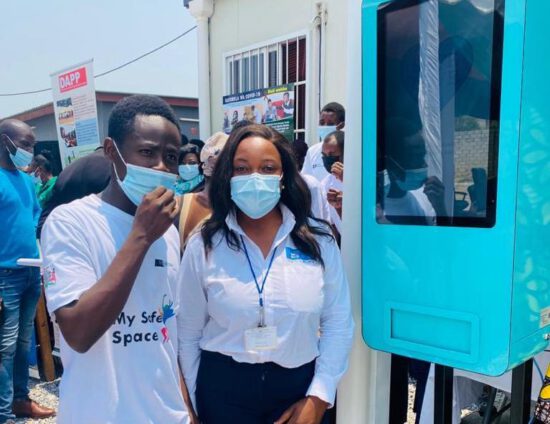
21st February 2019 by Jason Vincent
Leveraging vending machines to deliver high value items to repeat customers. How?
At Aeguana, we spend a lot of time thinking, talking about, and ultimately working on three main things, which (in our opinion) underpin the success of any vending operation:
- How do we transition vending from predominantly impulse purchases, to a repeat purchase model?
- How can we get new customers to use vending machines?
- How can we increase the Average Transaction Value (ATV) on each purchase?
As a follow up to my previous blog post on the opportunity that Vending presents in a world dominated by e-commerce (see here: http://blog.aeguana.com/2019/01/08/the-emerging-opportunities-for-vending-amidst-death-of-the-high-street/), and based on feedback and discussions since, I felt that it would be helpful to explore these points a bit further.
We’ll cover these in order and start with the first point as it’s an interesting one predicated on a common misconception – that vending machines almost exclusively service an ‘impulse purchase’ market.
If you think about the last time you saw a vending machine, what comes to mind? Chances are unless you live in Japan, it might have been in a pretty random place. There’s also the very real possibility you’re walking past them everywhere you go and don’t even notice them, but that’s another issue entirely!
What did you think of? Probably a confectionary machine at a railway station platform. Or maybe one of those sanitary vending machines in a toilet at work or in a local bar or pub. Would you buy from these? Possibly. If your train was late and you happened to be hungry. Or if it was a beautiful summer’s day (uncommon in London I’ll admit) and you wanted a drink. Or if you happened to have a bad headache and noticed that rusty looking vending machine on the wall behind you in the toilet. What all of these scenarios have in common is that they’re pure impulse purchases. You wouldn’t have set off in the morning with the *intent* of buying from any of these.
This is perhaps one of the key differences, culturally at least, with places like Japan. When you know you have vending machines on every street and every street corner, you can comfortably head out, not worry about buying a drink, and know you can get one on the move. Even better, with the diversity found in certain machines, you could easily buy your ritual cold-coffee from a vending machine at your commuter station every morning before work.
What this means is that vending in the UK operates almost entirely as a land-grab. When we’re focused on impulse purchases, the only thing that matters is how prominent the location is. And by that I mean footfall. 100k people a day walking past? That should convert to at least 2 sales. Fantastic!
Let’s look at different products instead. Healthy food, such as fresh salads, or healthy hot meals, from a vending machine for instance, located in your place of work. Do you have a 100k footfall? Probably not. But with good quality food, and a sufficiently diverse menu, would employees buy food? Probably. And if they enjoy it would they buy again? I’d like to think so… We’ve now acquired a new repeat-purchase customer. It only takes a few of these buying every few days to make a vending business vastly more profitable than an impulse purchase model. Every business wants to establish this type of behaviour – be it a convenience store, an online retailer, or a fashion brand. It’s almost impossible to survive long-term on one-off purchases, so why do we run vending businesses this way and accept it as the norm?
Following on from my last post, this is also where strategies to retain that customer and bring them back for a new purchase come into play. Loyalty apps for instance, rewarding them for each purchase, and notifying them when there is a new menu available, bring the offering to the forefront of their minds and hopefully help drive a purchase. More on these in another post though.
In our opinion, the future of vending is delivering true convenience. Being able to buy and/or collect a healthy meal from within your office building without needing to go out and queue at your local store. Being able to buy and/or exchange a power pack to charge your phone when you need it, in the full knowledge that you can quickly locate a nearby machine and therefore don’t need to worry about carrying chargers around all day. Knowing that a cosmetics retailer (like Sephora perhaps?) have a digital concession in every major railway station, and you can quickly buy the cosmetics you need on the go, any time of the day. This is where, in our opinion, the largest opportunity within the vending market resides. It won’t happen overnight though. Consumers need to become accustomed to this convenience, and operators / brands need to build their network density first in order to be able to deliver on this convenience. Similar to the “chicken and egg” social-network effect felt by every major social platform upon launch, consumers need operators and brands to take the plunge and build this network of smart, good looking and ultimately *convenient* vending machines in order to trust that they’ll have access to them when they want – and need – to buy from them.
That brings us onto point 2. How do we drive use of vending machines by new customers?
Also an interesting question, and not one with a simple answer. We need to take a page from the book of SaaS platforms and e-commerce and start by considering a customer acquisition cost (CAC). This is something we don’t need to concern ourselves with when looking at impulse purchases! But from the moment we know – or at least firmly believe – that a customer who buys from us once, will continue to buy from that machine, then we should feel comfortable incurring a cost to ‘acquire’ that customer. And there are a few reasons why winning customers is so crucially important with vending – arguably more so than any other bricks and mortar retailer:
- Customers fundamentally distrust vending machines. They take money and don’t dispense products. Products get stuck. Or in the case of a washroom machine, was there any product in there to begin with? This is a hard perception to shift.
- Is the food fresh? Most machines go empty, no one comes to restock for weeks or months on end. How can consumers trust that a salad is actually fresh – particularly in machines where they can’t even see the product?
- Is the food actually any good? For a market historically dominated by unhealthy, sugary snacks and drinks, with the occasional soggy hamburger from a microwave vending machine, how good will the food actually be?
Each of these challenges on their own is enough to fill several brainstorming sessions. Solving all 3 combined requires some fairly radical thinking – in vending terms at least.
By considering the value of a customer to the business in the long term, we can establish how much we’re willing to ‘pay’ to win them over. In our opinion there’s no need to look very far on how to do this… e-commerce has overcome some substantial trust barriers over the past 20 years. Give customers something for free, or at a heavily reduced price. If a new machine is installed in an office building, why not give each employee a one-time free trial of the great food inside? Pick your meal, enter the code, and enjoy. Oh but there’s a catch. They need to do this through the mobile app first – meaning we now have a way of rewarding them for that first purchase (even if it was free, or close enough). So a week later if we haven’t had any further purchases, we can prompt them with another discount code, or a new product that has just been introduced. It sounds so simple when we stop framing it as a vending ‘problem’ and look at wider retail strategies employed. So if we give them a free meal that costs us maybe £2.50 to prepare, but we’re winning a customer that might go on to buy 1 meal a week from the machine (which in all honesty is quite conservative). At an average ATV of £5, we’ve just made £257.50 profit on that £2.50 investment. That’s a pretty good ROI.
By incentivising this ‘free trial’ of the machine, we’ve proven that the machine works (if it doesn’t, then there are a whole set of other issues that need to be addressed, clearly). We’ve also proven that the food is in fact fresh, and does taste great. Why wouldn’t a customer go back to buy again?
This is obviously easier for some brands to achieve than others. A small operator won’t have the credibility of a high-street food chain, so they’ll need to work extra hard to prove points 2 and 3, whereas an established restaurant chain for instance might simply need to encourage customers to use a vending machine in the first place – customers who would take the quality of the resulting product for granted.
So we’ve now looked at recurring-purchase models for Vending, and incentivised customers to give it a shot. That’s worked, they’re buying from the machine regularly, and hopefully loving it. How do we increase the average transaction value?
Ironically, this is actually the easy bit. If customers already trust the medium and enjoy the product, a little strategic marketing can solve this. It mostly comes down to a couple of key things:
- Is the product selection inside the machine complimentary? If selling only main meals, then we’re limited to customers buying multiple meals at once which is highly unlikely. However, if we can also stock drinks and snacks, then the customer is more likely to buy an add-on.
- Once point 1 is ticked, then how do we encourage them to buy more than what they came for? By running deals. Tried and tested deals. Think about how Marks and Spencer and just about every supermarket chain runs ‘meal deals’ covering a sandwich / salad / snack / drink, or any combination thereof. Why doesn’t the same apply to vending? Select a main and get a drink for only £1 more. Easy.
This small up-sell might seem insignificant, but compounded across all purchases can quickly have an impact on sales and overall profitability.
At Aeguana, we’re constantly working with our clients to improve vending in every way. We believe in the future of automated retail, and try to help each of our clients come up with new, innovative solutions to increase sales, build a network, and ultimately deliver products to happy customers, everywhere.




